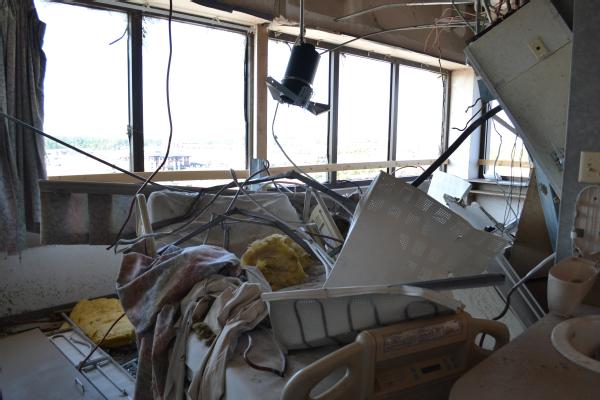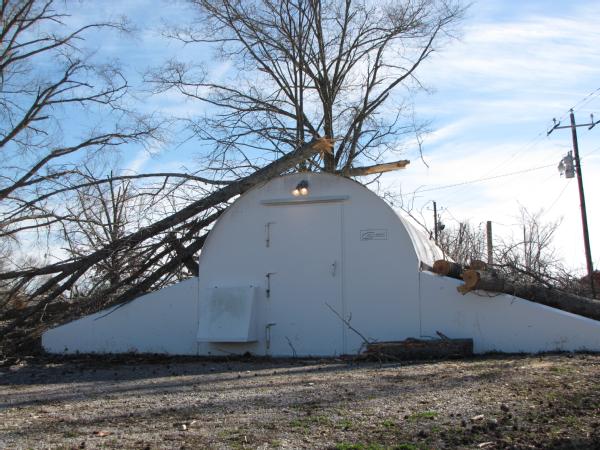Last week I was able to pay a second visit to our Joint Field Office in Joplin, Missouri. My first trip to Joplin was back in July, about five weeks after the devastating EF-5 tornado struck the city. I spent much of my youth south of Joplin in Tulsa, Oklahoma, so I am no stranger to the effects of tornadoes. Despite this experience, I was struck by the destruction Joplin suffered from the May tornado. Fatalities numbered 161, hundreds were injured, and more than 7,500 structures were damaged and another 4,000 completely destroyed. About one-third of the city of 45,000 was totally flattened.
During my first visit I was extremely impressed with the partnerships and professionalism that were driving the first weeks of the recovery. The leadership of city officials and the high levels of engagement by dozens of volunteer agencies and the private sector were impressive. I was struck by the Expedited Debris Removal Program and how the many hours of back-breaking work by volunteers allowed for debris to be cleared facilitating the re-building of homes and businesses in the impacted areas. In addition to the obvious physical signs of the early recovery, there was a feeling of optimism and resilience in everyone I met, from the City Manager, to the wait staff in restaurants, and people on the streets, I got the feeling that “here is a community that will come back better and more resilient than ever…”.
On my recent visit, I was deeply impressed by the progress that has been made in the six months since I was in Joplin. The more I thought about how so much had been done to recover, the concepts of the whole community approach to responding to and recovering from disasters that we have been espousing in presentations around the country jumped out at me. The folks of Joplin, working with volunteer agencies, and individual volunteers, the private sector, supported by state and federal government, were making the “new normal” for their city a reality.
Debris (1.2 million cubic yards) had been cleared within 75 days to facilitate rebuilding (over 3,600 building permits issued), over $17 million had been made in donations to support debris removal not eligible for government reimbursement, 117,000 volunteers from around the country had come to assist in rebuilding homes and providing a wide range of assistance. Mark Rohr, the City Manager, has stated that, “recent numbers released by the Building Department have indicated that approximately 50% of the homes destroyed by the tornado are already under permit for repairs or reconstruction. In my mind, this is a surprisingly positive and bodes well for Joplin’s future”.

Joplin, Mo., August 2, 2011 -- Damage sustained inside of St. John's Regional Medical Center after the May 22 EF-5 tornado that struck the city. FEMA is working to provide assistance to disaster survivors.
The major hospital that had been totally destroyed, but its capabilities to serve the community had been replaced by a temporary hospital and a 102 bed interim hospital is under construction. The promise of city officials to have facilities ready for children to return to classes in August had been met through Herculean efforts by government and the private sector. Five schools had been destroyed and six damaged. To assist, our Agency provided 167 temporary classrooms and 67 temporary safe rooms. While these contributed to building classroom capacity, former big box stores were re-configured into temporary schools, private companies provided classroom supplies and the United Arab Emirates contributed computer systems. Thousands of families had lost their homes. When I visited in July there were no available hotel rooms. Now, rental units have been found for families, and almost 600 temporary housing units were provided by our team. In July I walked on open fields owned by the city, there are now over 337 families living in communities created on those sites. There are also some empty spaces in which the units occupied by 74 families are no longer needed as they have permanent housing solutions.
Economic recovery is key to long term efforts to achieve a “new normal”. It was heartening to see that, while the tornado destroyed more than 500 businesses, 90% have now reopened or are opening in the near future. Home Depot, and other major employers have quickly rebuilt stores that were totally destroyed and have re-hired hundreds of folks. A Citizens’ Advisory Recovery Team (CART) was established to represent the whole community. This body, along with the Joplin City Council, the School Board, the Board of Aldermen, Chamber of Commerce, and the CART Executive Committee, supported by FEMA Long Term Community Recovery folks have developed and presented implementation plans for the recovery. Jane Cage, a business owner who stepped up to lead the Council has indicated, “Recovery is broad. It has to touch on almost every aspect of life in Joplin for us to succeed. We only really get one chance to do this right….”.
Ms. Cage exemplifies the nature of the recovery in Joplin. It is an effort in which the entire community is engaged. While we in the federal interagency family are in support of these efforts, it is clear that the impressive progress, and a shared vision for the future is being lead by the people of Joplin. They truly represent the best of the “Heartland of America”.






